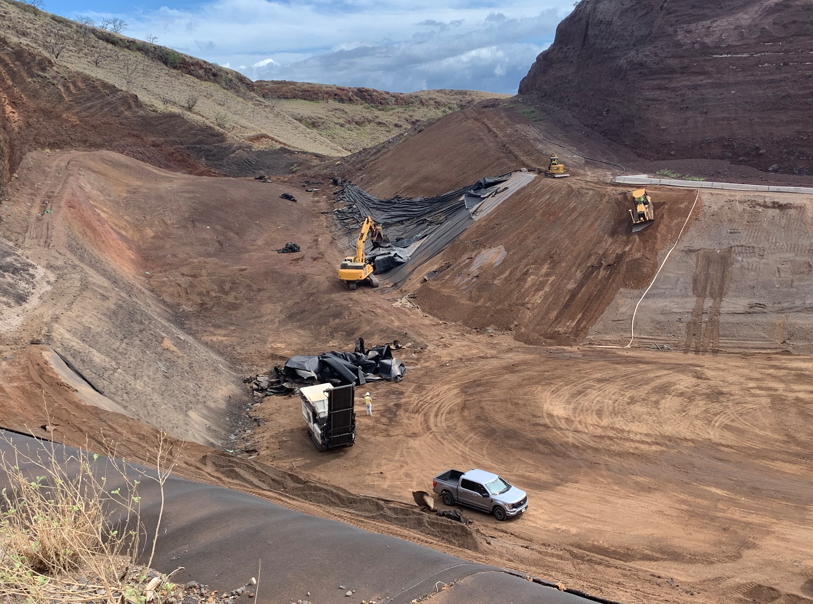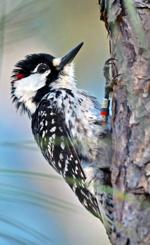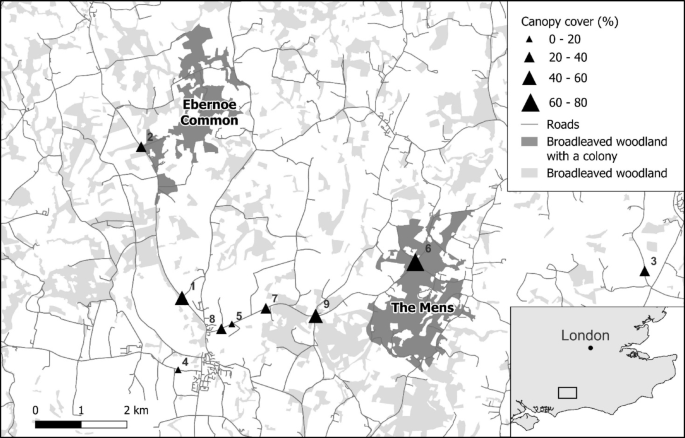Avian Population Decline and the Imperative of Sustainable Development Goal 15
The Pacific Flyway: A Critical Migration Corridor Under Threat
Billions of birds annually utilize established migration routes, known as flyways, for seasonal movements between breeding and wintering grounds. The Pacific Flyway, one of four major corridors in North America, extends from Alaska to Patagonia. This route provides essential stopover points for migratory species to rest and feed. However, the integrity of this natural infrastructure is compromised.
- Historically, these flyways offered extensive wetlands, forests, and fields.
- Urban, industrial, and agricultural development has led to the widespread destruction and fragmentation of these vital habitats.
- Consequently, the carrying capacity of the flyway has been significantly diminished, forcing birds to travel further to find suitable resources.
Habitat Loss as the Primary Driver of Biodiversity Decline
The degradation of natural habitats is the leading cause of species endangerment and is directly linked to a severe decline in avian populations. This crisis represents a failure to meet key targets within Sustainable Development Goal 15 (Life on Land).
- North America’s overall bird population has decreased by three billion in the last 50 years.
- This loss is a direct consequence of habitat destruction, which contravenes SDG Target 15.5, aimed at halting biodiversity loss and preventing the extinction of threatened species.
- The Columbia-Pacific region exemplifies this trend, with significant reductions in old-growth forests and the draining of wetlands for development.
Aligning Conservation Efforts with Global Sustainability Targets
The Role of Protected Areas in Achieving SDG 15 (Life on Land)
Preserving existing habitats is the most critical strategy for mitigating further biodiversity loss. The establishment and maintenance of protected areas are fundamental to achieving SDG 15.
- Large, unfragmented areas of undeveloped land are crucial for the survival of numerous species.
- Public lands, such as the Willapa National Wildlife Refuge and state parks, serve as vital sanctuaries for migratory birds.
- Non-profit organizations, including the North Coast Land Conservancy and Columbia Land Trust, play a key role by acquiring and protecting valuable habitats, directly contributing to conservation targets.
Habitat Restoration and Sustainable Land Management
In addition to preservation, the active restoration of degraded ecosystems is essential for rebuilding biodiversity and ecological resilience, aligning with SDG Target 15.1.
- Former agricultural fields and developed lands can be returned to a more natural state through intensive restoration efforts.
- These efforts often involve the removal of invasive species and the reintroduction of native plants.
- Native flora provides higher-quality food and shelter for birds, thereby enhancing the overall health of the ecosystem.
Strategic Recommendations for Stakeholder Action
Multi-Sector Collaboration: A Framework for SDG 17 (Partnerships for the Goals)
Effective conservation requires a coordinated approach involving diverse stakeholders. The collaboration between public agencies, non-profit land trusts, and private landowners exemplifies the principles of SDG 17 (Partnerships for the Goals), creating a robust network for habitat protection.
Individual and Community-Level Contributions
Collective action is necessary to ensure the long-term viability of migratory bird populations. Individuals and communities can contribute to global sustainability goals through the following actions:
- Support efforts to protect and expand public lands, which contributes to SDG 11 (Sustainable Cities and Communities) by safeguarding green spaces and natural heritage.
- Provide financial support to land trusts and conservation non-profits to enable the acquisition and protection of critical habitats.
- Adopt land management practices that minimize impact on natural areas, preventing habitat fragmentation and promoting biodiversity.
- Engage in responsible, short-term support measures, such as providing high-energy food sources for birds during cold weather, while ensuring these actions do not lead to negative human-wildlife interactions.
Sustainable Development Goals (SDGs) Analysis
1. Which SDGs are addressed or connected to the issues highlighted in the article?
The article primarily addresses issues related to SDG 15: Life on Land. It also connects to SDG 11: Sustainable Cities and Communities.
- SDG 15 (Life on Land): The core theme of the article is the impact of habitat loss on terrestrial ecosystems and biodiversity. It discusses the destruction of forests and wetlands, the resulting decline in bird populations, and the importance of conservation and habitat restoration. This directly aligns with SDG 15’s focus on protecting, restoring, and promoting the sustainable use of terrestrial ecosystems and halting biodiversity loss.
- SDG 11 (Sustainable Cities and Communities): The article mentions that wild places have been destroyed to make way for “farmland, cities, and other development.” It also highlights the negative effects of “habitat fragmentation, whether through roads or other development.” This connects to SDG 11’s goal of making human settlements sustainable, which includes protecting natural heritage and managing the environmental impact of urban expansion.
2. What specific targets under those SDGs can be identified based on the article’s content?
Several specific targets can be identified based on the article’s discussion:
- Target 15.1: By 2020, ensure the conservation, restoration and sustainable use of terrestrial and inland freshwater ecosystems and their services, in particular forests, wetlands, mountains and drylands.
- The article explicitly calls to “preserve as much existing habitat as possible,” mentioning “wetlands, fields, and forests.” It also highlights the work of entities engaged in “habitat restoration,” aiming to return “farm fields or lawns” to a natural state.
- Target 15.5: Take urgent and significant action to reduce the degradation of natural habitats, halt the loss of biodiversity and, by 2020, protect and prevent the extinction of threatened species.
- The article’s central point is the loss of bird populations (“dropped by three billion”) due to “habitat loss, the leading overall driver of species endangerment and extinction.” The call to preserve habitat is a direct action to halt this biodiversity loss.
- Target 11.4: Strengthen efforts to protect and safeguard the world’s cultural and natural heritage.
- The article emphasizes the importance of protecting “old-growth ecosystems” and “larger areas of undeveloped land.” It identifies “Willapa National Wildlife Refuge” and various “State Parks” as crucial habitats, which are part of the natural heritage that this target aims to safeguard.
3. Are there any indicators mentioned or implied in the article that can be used to measure progress towards the identified targets?
Yes, the article mentions and implies several indicators:
- Indicator for Target 15.5 (Halting biodiversity loss): The article provides a direct quantitative measure of biodiversity loss: “The overall population of birds in North America has dropped by three billion… in the past 50 years.” Tracking changes in bird population numbers over time would serve as a direct indicator of progress.
- Indicator for Target 15.1 (Conservation of ecosystems): The article implies the use of land cover as an indicator. It states, “Compared to 50 years ago, there is significantly less old growth forest, with only a few scattered patches left. Wetlands have been drained, fields turned into lawns for houses.” Therefore, measuring the total area of protected land, the extent of old-growth forests, and the area of restored wetlands could be used as indicators.
- Indicator for Target 11.4 (Protecting natural heritage): The article implies that the amount of land protected by specific entities can be an indicator. It mentions “Public lands,” “Willapa National Wildlife Refuge,” “Oregon and Washington State Parks,” and lands protected by “nonprofit land trusts like the North Coast Land Conservancy and Columbia Land Trust.” The total acreage managed by these groups for conservation is a measurable indicator of progress in safeguarding natural heritage.
4. Summary Table of SDGs, Targets, and Indicators
| SDGs | Targets | Indicators |
|---|---|---|
| SDG 15: Life on Land | 15.1: Ensure the conservation, restoration and sustainable use of terrestrial and inland freshwater ecosystems and their services. | The extent of key ecosystems such as old-growth forests and wetlands. The article notes there is “significantly less old growth forest” and “wetlands have been drained.” |
| SDG 15: Life on Land | 15.5: Take urgent and significant action to reduce the degradation of natural habitats and halt the loss of biodiversity. | Change in bird population numbers. The article states the population “has dropped by three billion… in the past 50 years.” |
| SDG 11: Sustainable Cities and Communities | 11.4: Strengthen efforts to protect and safeguard the world’s cultural and natural heritage. | Area of land protected by public and private entities. The article mentions “Willapa National Wildlife Refuge,” “State Parks,” and “nonprofit land trusts” as examples of entities protecting valuable habitat. |
Source: discoverourcoast.com







